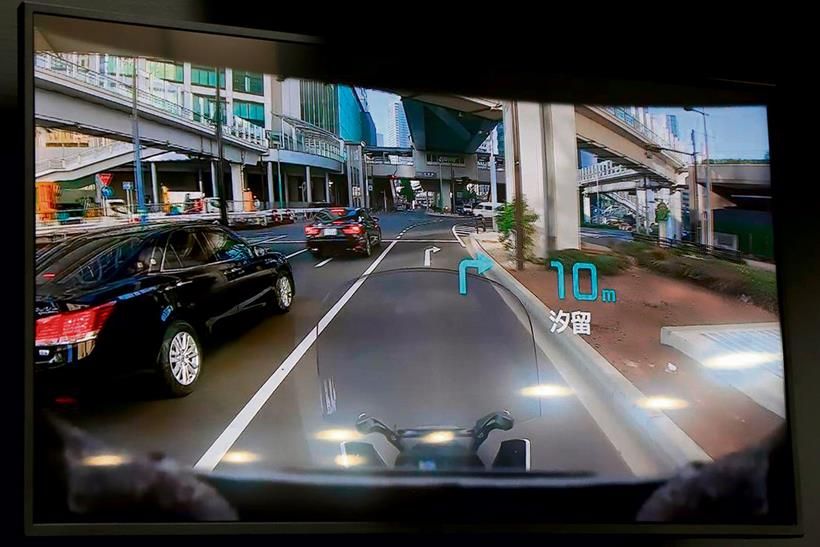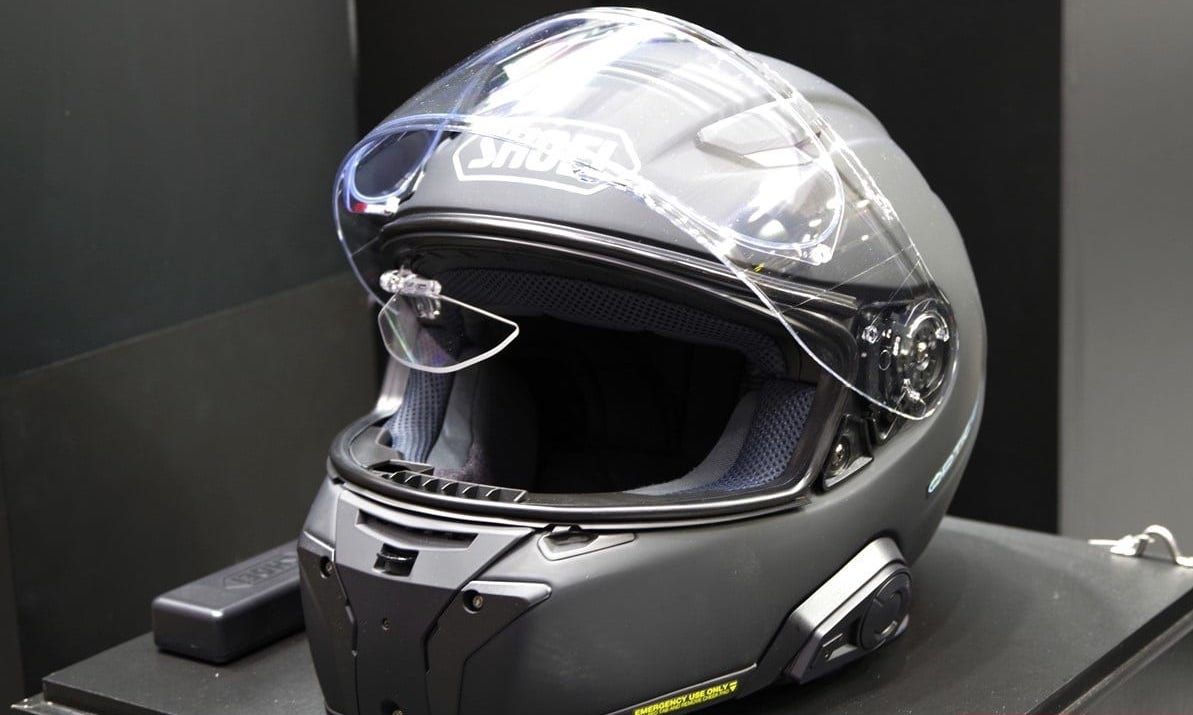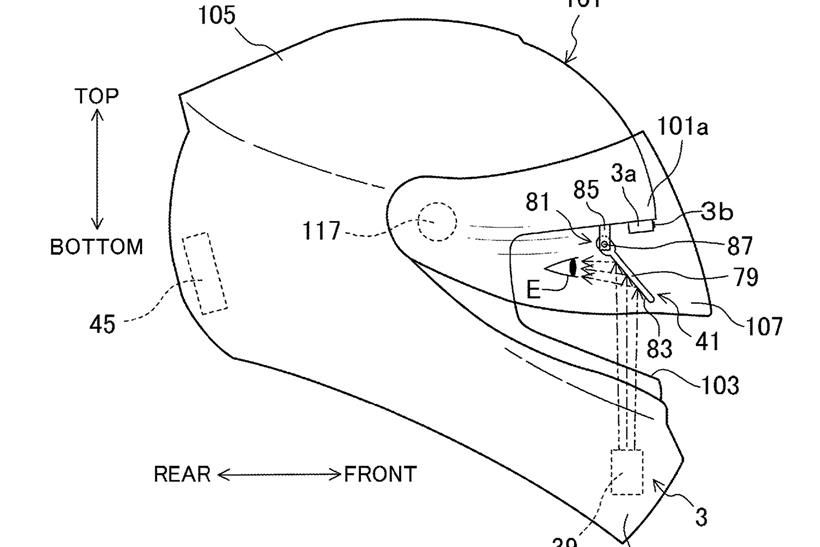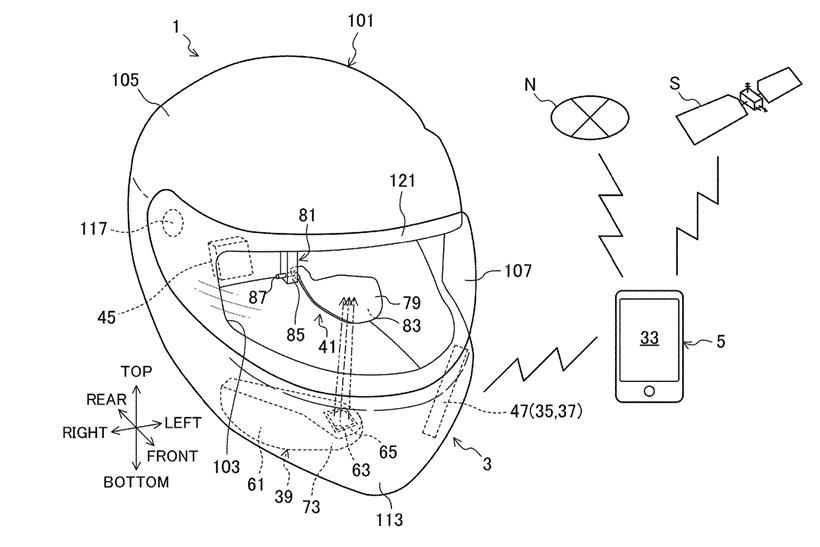While Head-Up Display technology is common in cars, it has been a long-time-coming for motorcycles. Now helmet manufacturer Shoei is nearing launch-time with its system.
Shoei Head-Up Display technology ready to debut
Technology begets technology: isn't that the case? In every aspect of motorcycling, technology - and, more importantly, miniaturisation - has completely revolutionised how we ride and, more pertinently, how we see where we are riding.
In motorcycle sport, for example, miniaturisation has enabled race bikes to be festooned with cameras no larger than a matchbox (and appreciably smaller, it has to be said), giving us unparalleled real-time on board footage that has transformed the way we watch the sport we love. In Formula 1, drivers now have cameras mounted behind the visor of their helmets, giving us a new appreciation of just what the driver is seeing during the course of a race.
That same miniaturisation is also making possible technology for the road that would have been unthinkable a mere decade ago.
Head-Up Display (HUD) has been fitted to cars for many years now but that is easy given the amount of space available to fit the projector and the size of the 'screen' onto which to project the image.
It's a bit more difficult with motorcycles. Certainly many bikes have a screen of some sort but they are not always directly within the rider's line of sight, so projecting an image onto it wouldn't necessarily be all that visible. Then, of course, there is the problem that not every bike has a screen!
Up to this point there have been many false starts with helmet-mounted HUD technology but for a number of reasons it just hasn't proved practical. However, with the explosion in portable computing power comes new possibilities, driven by lightweight and small yet powerful components.
At the recent Osaka and Tokyo motorcycle shows, helmet manufacturer Shoei presented their latest HUD technology, showing that here, at last, could be a viable HUD option for motorcycle helmets.
Shoei's technology was first seen at CES in las Vegas in 2019 but has clearly been further refined in the intervening years. The helmet manufacturer has given it the trademarked name of Opticson, which gives some indication of their intention to produce it commercially.
The tech is nothing startling: the image is projected onto a transparent, angled surface, which is called the Combiner, that hangs in front of your eye. it is mounted on a multi-adjustable bracket to ensure the perfect vision for any shape of face and eye position. The focus is set so that the image appears to be hovering some way in front of the visor. The projector sits in the chin bar of a full-face helmet.
The Shoei system is different to previous systems in that the projector and combiner are separate so that the combiner can be moved out of the way if not needed.
Of course, the real breakthrough is the packaging. Components - batteries and computing systems - are now small enough to incorporate into a helmet's construction and the system can be connected via bluetooth to a smartphone so a built-in GPS unit is not required for Satnav information, further reducing size.
Obviously, the size of the combiner is limited and, therefore, the amount of information that can be displayed but the system exhibited at the two show stands showed that speed, distance to the next turn and which lane to use could all be displayed simultaneously.
Some of you will wonder if such technology is needed but that hardly seems the point. There is very little technology that is 'needed' but there can be no doubt that it enhances our lives in a million ways, even if it does make us lazy.
As long as it's not distracting, then an HUD for a motorcycle helmet is a good idea. One concern might be that the amount of real estate of a motorcycle visor is small enough already without crowding it with too many distractions, something that is hardly relevant in a car.
However, progress is inevitable and, if the Shoei system can be made as small as possible while still remaining visible and not distracting, then here, surely, is the technology of the future.




